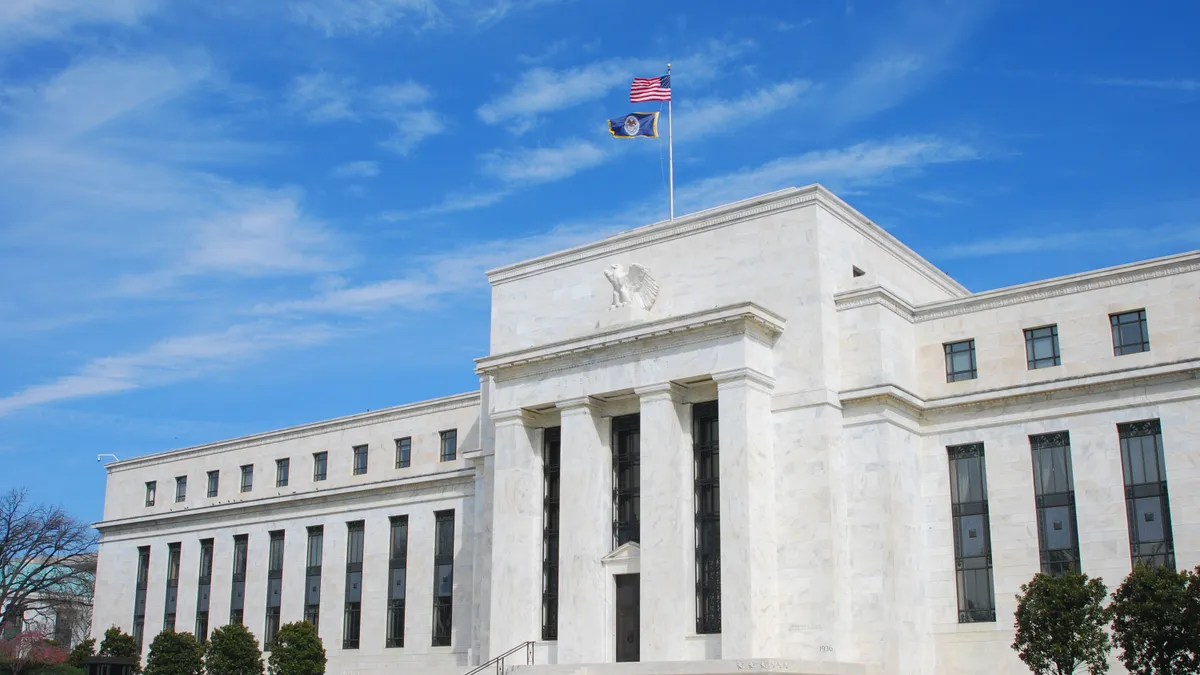U.S. financial institutions that issue debit cards and the merchants that loathe the cards’ interchange fees have delivered warring comments to the Federal Reserve over its proposal to lower a cap on the fees.
The Federal Reserve Board said it has received more than 2,500 comments, including hundreds of form letters, in response to its request for public comment on the October proposal. The comments were due Sunday.
The proposal would lower the base debit fee rate that merchants are charged by about a third to 14.4 cents, from 21 cents, according to an October memo produced by the Fed’s staff. Additional changes to what is known as Regulation II under the 2010 Dodd-Frank Wall Street Reform and Consumer Protection Act, would adjust the amounts that bank card issuers can charge to cover fraud costs and to counter fraud losses.
The fee cap and the proposal would apply only to debit card issuers, which are generally banks and credit unions, that have $10 billion or more in deposits.
Currently, the cap is set at 21 cents plus 0.05% of the value of the debit transaction, in addition to a one-cent fraud-prevention adjustment.
Given extensive interest in the issue, the Fed in January extended the period during which it was willing to accept public comments on the issue to May 12, from its original Feb. 12 deadline.
Banks that issue debit cards and merchants that must pay fees every time a consumer uses the card have been battling over the fees for years. When the Fed proposed to cut the fee cap for the first time in more than a decade, it sparked the flood of comment letters.
Merchants would like the Fed to go further in its attempt to recast the approach. For instance, the National Retail Federation this week in a press release called on the Fed to further revamp its proposed methodology for determining the fees because the proposal “would leave the cap too high.”
“We are very appreciative that the Board has undertaken to update the interchange rate so that it will no longer depend on data that is now fifteen years old,” the NRF said in its May 12 letter to the Fed. “We further wholeheartedly support a mechanism to update interchange in future years, so that it may accurately reflect the permissible amount as costs inevitably change.” Still, that new methodology isn’t yet compliant and consistent with the Electronic Funds Transfer Act, the letter said.
Similarly, in a 22-page letter last week, the Merchants Payments Coalition suggested ways in which the Fed should revise its proposal. “The MPC believes that several modifications are needed to the Proposed Rule in order to make it fully consistent with the governing statute,” the May 10 letter said.
State financial institutions and organizations, including the Iowa Credit Union League, took an opposite tack, urging the Fed not to implement the reduced fee cap and drawing a distinction between smaller financial institutions and their larger national peers.
“While we support the Board’s intent to protect consumers, we strongly encourage the Board of Governors to reconsider its proposal,” the league said in its May 6 letter. “Specifically, we find the changes in this rule to present financial detriments to credit unions, particularly as they are not large financial institutions.”
The biggest financial institutions’ trade groups filed their letters early, with the ten major organizations, including the American Bankers Association and the Electronic Payments Coalition, criticizing the proposal in a November letter and seeking to stop the Fed from finalizing the rule proposal.
Another interest group, the International Center for Law & Economics, suggested the Fed simply drop its efforts to regulate the fee. “The Board should acknowledge that markets are the best mechanisms to establish such fees and remove the price controls altogether,” its April 23 letter said.











